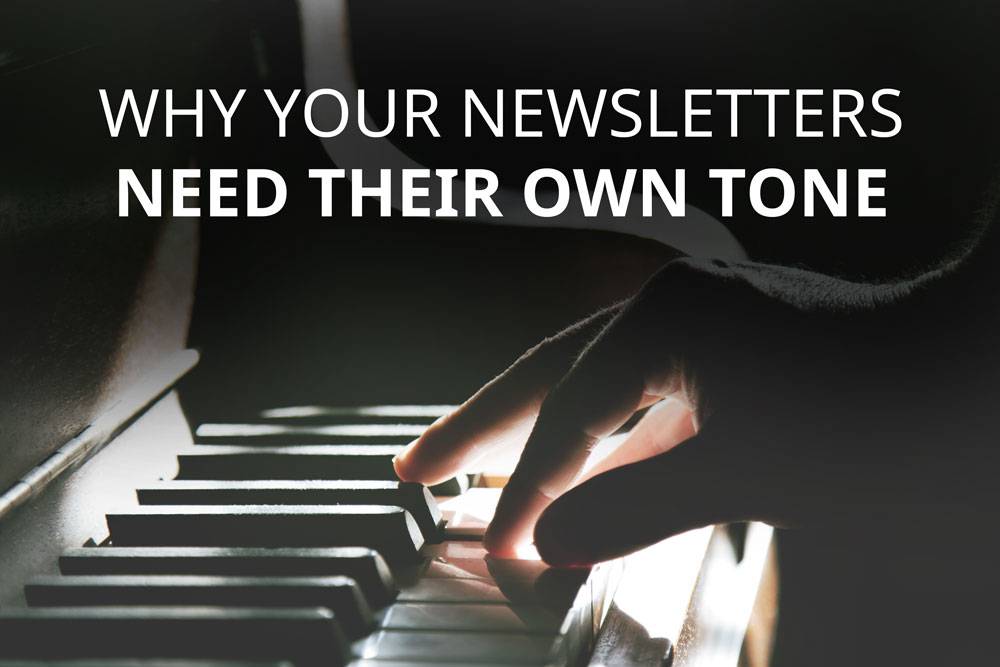Why Your Newsletters Need Their Own Tone
Would you talk to your best customer in three different styles during a live meeting? If your answer is "no", then it might be time to adjust your email marketing's tone as well.

Imagine the following: you’re buying food at your local grocery shop. A shop assistant comes up to you and asks:
“Hello! Would you like to try this apple? It’s a brand new kind!”
You pause.
“It’s sooo good, dude! This apple is killing it!”
“Umm, killing what?”
“Oh, don’t you know how to eat an apple? It’s simple! First: you take it in your hand. Next, you take a bi-”
“Actually, I’m not that hungry.”
“But the nutritional values of eating at least 1 apple every 24 hours significantly contributes towards sustaining a healthy lifestyle. Wouldn’t you like to preserve your health?”
… Have you run away yet?
What’s the problem with this imaginary marketing scene? It’s not the product - for all we know, that apple could be a toffee-and-marshmallow-covered, delectable piece of fruit. It’s not even the content, since what the over-enthusiastic shop assistant said is (or could be) all true. Eating an apple every day will do you good, and this particular apple might even do you better than all the rest in the store.
No, the reason why this over-enthusiastic shop assistant couldn’t close the deal was because of how they pitched their product. More specifically, the way they jumped from talking conversationally to talking slang, then changing into a living how-to guide before going all academic. Like riding a verbal merry-go-round at a hundred miles per hour - too much for any level-headed consumer, isn’t it?
This, in a nutshell, is what happens with your email marketing when it has an uneven tone of voice. If you kick off your newsletter with an informal introduction, and then dive straight into a technical explanation of your offering before ending with some jokes, your subscribers will never know what role you’re supposed to be in their lives. (Salesman? Professor? Jimmy Fallon?) Which means that they won’t know what they’re supposed to do either. Which leads to closing and/or deleting your email newsletter due to plain confusion.
People don't always remember what you say or even what you do, but they always remember how you made them feel. (Maya Angelou)
Talking to your audience in a way they can associate with you, no matter what you’re talking about, makes your brand more human. If you send out weekly newsletters about your local coffee shop, for example, you could choose to write your email like if you were talking to your customers over a cappuccino, even when talking about coffee sourcing and reward programs. This will lead to higher open rates and subscriber engagement levels, not to mention stronger brand awareness.
Just to be clear: having a well-defined tone of voice for your email marketing doesn’t mean talking in the same way about everything. B2B companies selling software, for example, have to get technical occasionally, even if they usually try to keep their emails light and easy, otherwise their subscribers won’t get valuable information. Content and audience should always affect your tone - the trick is to tweak it, not change it completely. Then your subscribers will still feel like it’s the same person talking to them.
So if you can, set out and find your company’s true tone of voice. (If you need some inspiration, here’s a good place to get started.) Once you’ve found it, your job is half done! All you need to do now is stick to it more or less in your newsletters. Remember the Matrix? Do what Neo does: bend the rules, or even break them sometimes, but always keep them in mind. And then your apples will sell themselves.
Do you have any more questions about email marketing? Why not contact one of our Apsis Consultants? They have extensive knowledge, and they love sharing it.